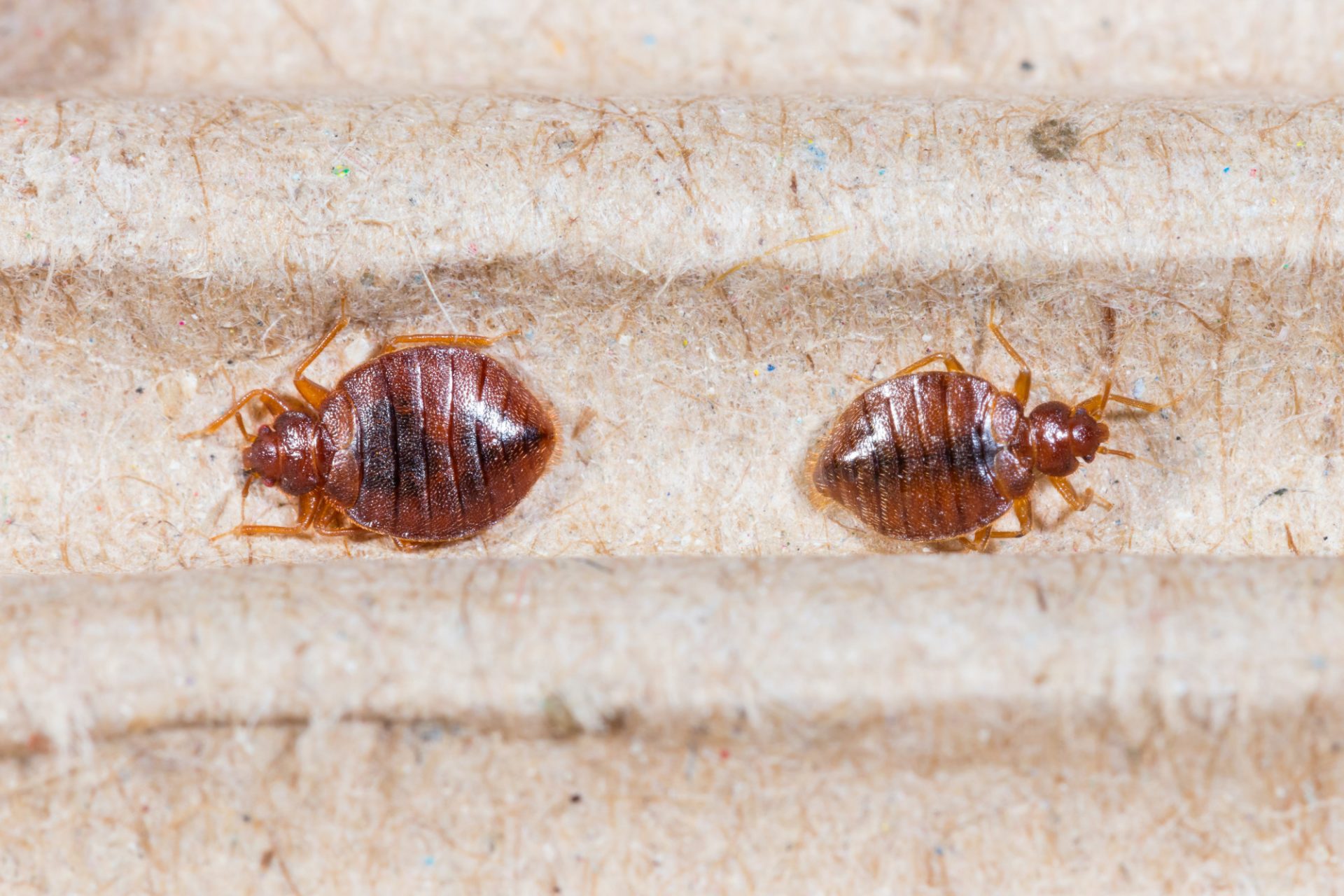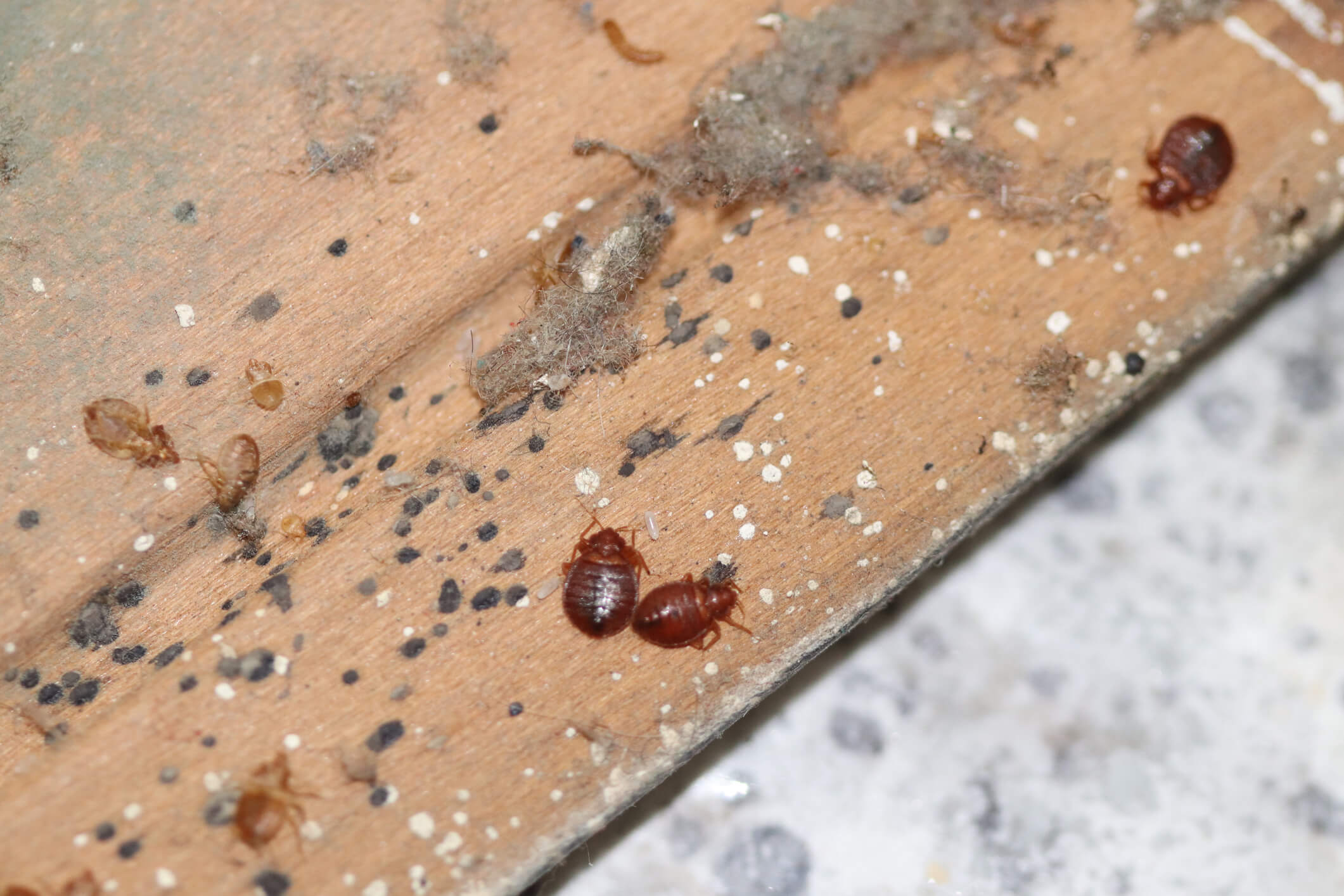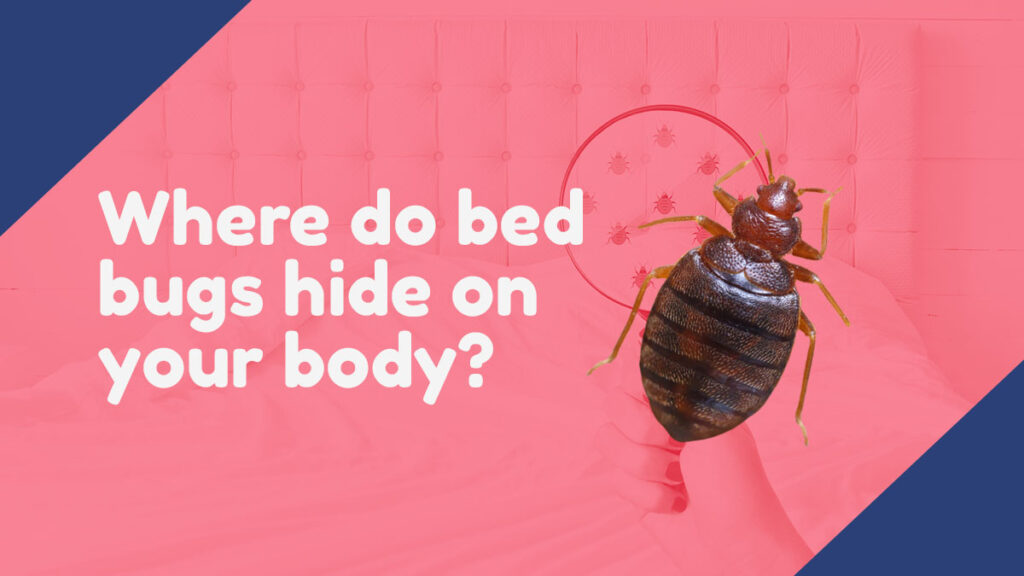Bed bugs are small, brown, oval-shaped insects that feed on human blood. They are most commonly found in mattresses and sheets, making them a major nuisance for homeowners. If you suspect that you have a bed bug infestation, the first step is to check your mattress for any signs of these pesky bugs. To check for bed bugs in a mattress, start by stripping off all the bedding and linens. Look closely at the seams, piping, and tags of the mattress for any signs of bed bugs. These include tiny blood stains, dark spots (fecal matter), and shed skins. You may also be able to spot the bugs themselves, which are about the size of an apple seed and may be crawling around in the crevices of the mattress. If you find any of these signs, it's important to act quickly to get rid of the bed bugs before they spread to other areas of your home.1. How to Check for Bed Bugs in a Mattress
In addition to checking your mattress, it's also important to look for signs of bed bugs in your sheets. Since bed bugs are attracted to warmth and carbon dioxide, they tend to hide in the folds and creases of sheets where they can easily access their food source (you). Some signs of bed bugs in sheets include blood stains from their bites, dark spots from their fecal matter, and a musty odor caused by their scent glands. You may also find live bugs or shed skins in between the sheets. If you regularly wake up with unexplained bites, it's a good idea to check your sheets for any signs of bed bugs. This can help you address the problem before it becomes a full-blown infestation.2. Signs of Bed Bugs in Sheets
Bed bugs are excellent at hiding and can fit into the tiniest of spaces. When it comes to mattresses, they tend to hide in the seams, crevices, and folds. This allows them to easily access their food source while remaining concealed from view. Other common hiding spots for bed bugs in a mattress include the box spring, bed frame, and headboard. They may also hide in cracks and crevices in the walls or furniture near the bed. If you're dealing with a bed bug infestation, it's important to thoroughly inspect all these areas to ensure that you eliminate all the bugs and prevent them from returning.3. Where Do Bed Bugs Hide in a Mattress?
Dealing with a bed bug infestation in your mattress can be a daunting task, but it's not impossible. There are several methods you can try to get rid of these bugs and ensure they don't come back. One effective method is to vacuum your mattress thoroughly, focusing on the seams and crevices where bed bugs are likely to hide. After vacuuming, dispose of the vacuum bag in a sealed plastic bag to prevent any potential bugs from escaping. You can also steam clean your mattress to kill any remaining bugs and their eggs. If the infestation is severe, you may need to use insecticides or hire a professional exterminator to treat the mattress. It's important to follow all safety precautions and instructions when using insecticides to avoid any harm to yourself or others.4. How to Get Rid of Bed Bugs in a Mattress
Bed bugs are not limited to just mattresses. They can also live in sheets and other bedding materials, especially if they are not changed or washed regularly. This is because bed bugs are attracted to the warmth and carbon dioxide that humans emit while sleeping, making sheets an ideal hiding spot. However, bed bugs do prefer to hide in the seams and crevices of a mattress as it provides them with easy access to their food source. So while they can live in sheets, they are more likely to be found in a mattress.5. Can Bed Bugs Live in Sheets?
The best way to prevent bed bugs from infesting your sheets is to take preventive measures. This includes regularly washing and changing your sheets, as well as inspecting them for any signs of bed bugs. If you've recently traveled or stayed in a hotel, it's a good idea to wash all your clothes and bedding immediately to prevent any potential bugs from entering your home. You can also use a mattress encasement, which is a special cover that completely encloses your mattress and prevents bed bugs from entering or escaping. This can be especially useful if you've had a bed bug infestation in the past.6. How to Prevent Bed Bugs in Sheets
No, bed bugs can live in a variety of places, including furniture, luggage, and even clothing. However, they do prefer to live in mattresses as it gives them easy access to their food source. They can also hide in other areas of the bedroom, such as the box spring, headboard, and nightstand. It's important to thoroughly inspect all these areas if you suspect a bed bug infestation to ensure that you eliminate all the bugs and prevent them from returning.7. Do Bed Bugs Only Live in Mattresses?
If you have bed bugs in your sheets, you'll need to treat them in addition to treating your mattress. Start by washing your sheets and any other bedding materials in hot water. This will kill any bugs or eggs that may be hiding in the fabric. You can also use a bed bug spray or insecticide specifically designed for treating bedding materials. Be sure to follow all safety precautions and instructions when using these products.8. How to Treat Bed Bugs in Sheets
Yes, bed bugs can survive in a mattress for several months without feeding. This is why it's important to take immediate action if you suspect a bed bug infestation. The longer you wait, the more difficult it will be to get rid of them. It's also important to note that bed bugs can survive in a wide range of temperatures, from freezing to up to 122 degrees Fahrenheit. This makes it even more important to use effective methods for treating and preventing bed bugs in your mattress and sheets.9. Can Bed Bugs Survive in a Mattress?
Cleaning bed bugs from sheets can be a challenging task, but it's not impossible. If your sheets are infested with bed bugs, you can start by washing them in hot water and drying them on high heat. This will kill any bugs or eggs that may be hiding in the fabric. For added protection, you can also use a bed bug spray or insecticide specifically designed for treating bedding materials. Just be sure to follow all safety precautions and instructions when using these products. In addition to treating your sheets, it's important to also treat your mattress and other areas of the bedroom to ensure that you eliminate all the bugs and prevent them from returning.10. How to Clean Bed Bugs from Sheets
The Truth About Bed Bugs: Are They In Your Mattress or Sheets?

The Rise of Bed Bugs in Homes
 Bed bugs have become a widespread issue in recent years, causing distress and frustration for homeowners. These tiny, reddish-brown insects feed on human blood and are known to cause itchy, red welts on the skin. But the question on many people's minds is, where exactly are these pesky bed bugs hiding? Are they lurking in the mattress or hiding in the sheets?
Bed bugs have become a widespread issue in recent years, causing distress and frustration for homeowners. These tiny, reddish-brown insects feed on human blood and are known to cause itchy, red welts on the skin. But the question on many people's minds is, where exactly are these pesky bed bugs hiding? Are they lurking in the mattress or hiding in the sheets?
Understanding Bed Bug Behavior
 Before we can determine where bed bugs are typically found, it's important to understand their behavior. These insects are nocturnal and prefer to hide in dark, tight spaces during the day. They are skilled at hiding and can squeeze into cracks as thin as a credit card. However, they are not limited to just mattresses and sheets.
Before we can determine where bed bugs are typically found, it's important to understand their behavior. These insects are nocturnal and prefer to hide in dark, tight spaces during the day. They are skilled at hiding and can squeeze into cracks as thin as a credit card. However, they are not limited to just mattresses and sheets.
Bed Bugs in the Mattress
 One of the most common misconceptions is that bed bugs only infest mattresses. While it is true that bed bugs can be found in mattresses, they are not limited to just this area. Mattresses provide an ideal hiding spot for bed bugs as they offer warmth, darkness, and easy access to their food source – human blood. However, bed bugs can also be found in other areas of the bedroom, such as box springs, bed frames, and even headboards.
One of the most common misconceptions is that bed bugs only infest mattresses. While it is true that bed bugs can be found in mattresses, they are not limited to just this area. Mattresses provide an ideal hiding spot for bed bugs as they offer warmth, darkness, and easy access to their food source – human blood. However, bed bugs can also be found in other areas of the bedroom, such as box springs, bed frames, and even headboards.
Bed Bugs in the Sheets
 Bed bugs can also be found in sheets, especially if they are heavily infested. These insects are attracted to the carbon dioxide and body heat that humans emit, making the sheets and bedding an ideal location for them to hide. However, it's important to note that bed bugs do not just live on the surface of sheets. They can also burrow into the seams and folds of sheets, making it difficult to spot them.
Bed bugs can also be found in sheets, especially if they are heavily infested. These insects are attracted to the carbon dioxide and body heat that humans emit, making the sheets and bedding an ideal location for them to hide. However, it's important to note that bed bugs do not just live on the surface of sheets. They can also burrow into the seams and folds of sheets, making it difficult to spot them.
Conclusion
 In conclusion, while bed bugs are commonly associated with mattresses and sheets, they can also be found in other areas of the bedroom. It's important to regularly check and clean all areas of the bedroom, including furniture, to prevent and control bed bug infestations. If you suspect you have a bed bug problem, it's best to consult a professional pest control company for proper treatment. Don't let these tiny insects disrupt your peaceful sleep – be vigilant and proactive in keeping them out of your home.
In conclusion, while bed bugs are commonly associated with mattresses and sheets, they can also be found in other areas of the bedroom. It's important to regularly check and clean all areas of the bedroom, including furniture, to prevent and control bed bug infestations. If you suspect you have a bed bug problem, it's best to consult a professional pest control company for proper treatment. Don't let these tiny insects disrupt your peaceful sleep – be vigilant and proactive in keeping them out of your home.






































































































